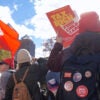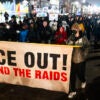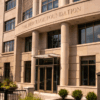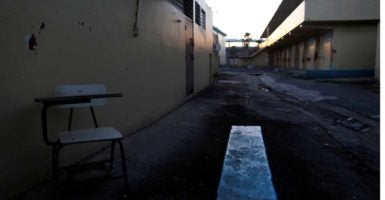In the months following the devastation of Hurricane Maria in September, Puerto Rico has struggled to find its footing and rebuild.
Unfortunately, dysfunction was already rampant in the debt-ridden territory before the storm.
Now things are worse, but perhaps there is an opportunity to finally make some badly-needed changes.
Bailouts and federal meddling are unlikely to turn things around. It’s clear that deeper local changes are needed to get the territory on a more sustainable long-term path.
On Monday, Puerto Rico Gov. Ricardo Rossello, a member of the conservative New Progressive Party, announced a plan to introduce private school choice options to parents in his territory.
This is in line with his other recent move to privatize the state-backed energy company that has performed poorly for Puerto Rico’s citizens and is a huge reason the island has been so slow to bring power back on for many residents.
These are welcome changes.
“Every child, regardless of their economic condition or where they come from, must have access to that education; in a system where parents are involved and have the right to choose a high-performance school,” Rossello wrote in a statement. “Over the past decades, this has not happened in Puerto Rico.”
This proposal includes charter schools that will be managed by nonprofit organizations, and vouchers so that parents can decide where their children will be educated. Rossello also announced a decentralization of the public school system in place and a pay raise for teachers.
Of course, not everyone was pleased with the move.
Teachers unions, which have generally opposed school choice, were quick to denounce its introduction in Puerto Rico.
“Instead of the wholesale closing of public schools proposed by this fiscal plan—or privatizing these—schools need to be transformed into centers of their communities to provide stability and support to help students overcome trauma and continue to learn,” said Aida Díaz, president of the island’s teachers union, in a joint statement with Randi Weingarten, president of the American Federation of Teachers, according to The 74.
Naomi Klein, an author and left-wing activist, harshly condemned the sudden changes on Twitter.
2 weeks after announcing the privatization of the electricity system, Puerto Rico's governor just declared the school system will be privatized (charters, vouchers), just like post-Katrina New Orleans. Don't let anyone tell you it was a success: https://t.co/OKQPAbVqoU https://t.co/l9OKCTxpPX
— Naomi Klein (@NaomiAKlein) February 5, 2018
However, after such long-term failure, it’s clear that something needs to be done to change the trajectory for Puerto Ricans, especially for their children. The already poorly performing school system is now literally falling apart.
“It became obvious that the system isn’t driven by what’s best for the student, and that there’s an enormous bureaucracy,” Puerto Rico Education Secretary Julia Keleher said, according to the Associated Press. “The system has a lot of problems.”
Rossello’s decision to adopt school choice policies opens up some hope that a long-term turnaround may come. The problems they face are clearly not just the result of a single storm.
Puerto Rico’s move to adopt private school choice is reminiscent of what took place in New Orleans in the wake of Hurricane Katrina.
Though New Orleans was prepared to adopt school choice programs before the storm battered the city in 2005, the widespread destruction of school districts in the city opened the door for more sweeping reforms.
While there have certainly been challenges for school choice in New Orleans, largely due to the fact that it remains so heavily regulated, there have been positive developments for what was one of the poorest-performing school systems in the country.
Puerto Rico has a much bigger hill to climb than even New Orleans. The numbers, even pre-storm, are depressing.
A 2015 assessment of math scores, for instance, shows that Puerto Rico is far behind the worst-performing U.S. states. In fact, Puerto Rican fourth-graders performed three grade levels below even the Bureau of Indian Education schools that fall far below every state, and zero percent of students in the territory received a proficient rating in math.
That can’t continue if Puerto Rico wants to recover from the storm and long-term economic failure.
These numbers have been bad for far too long to think that there isn’t a fundamental problem. The education system was already underperforming for decades. The recent disaster just pushed it over the edge.
So, Puerto Rico has a long way to go to create an acceptable education system for its students, but it’s clear that sweeping changes are needed.
Taking the first steps to introduce school choice opens the door for the beleaguered island to finally get on the road to success.






























